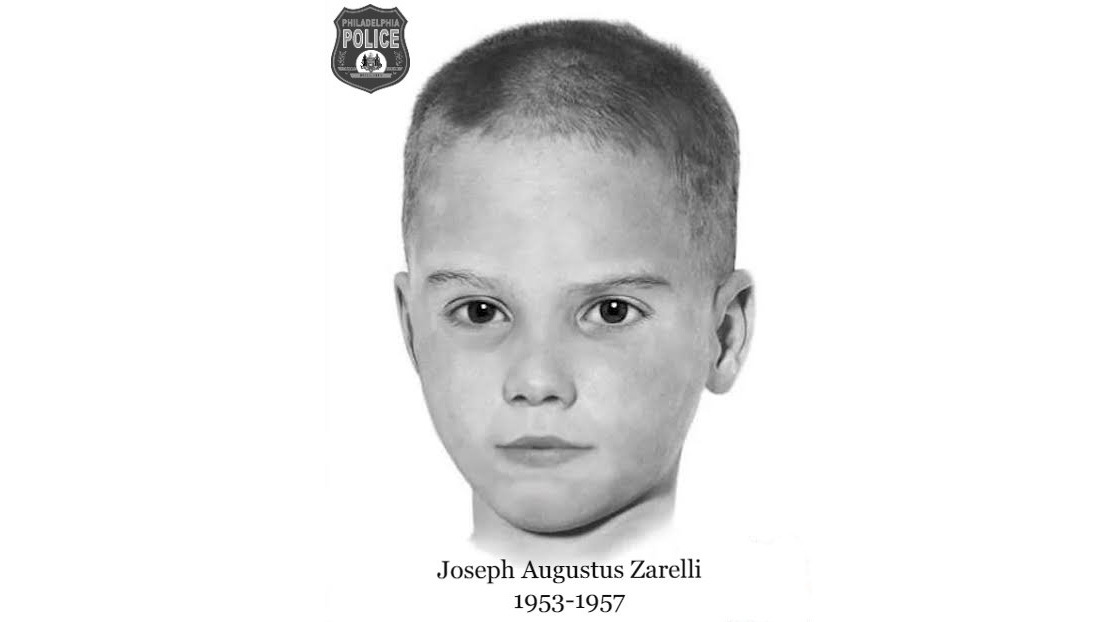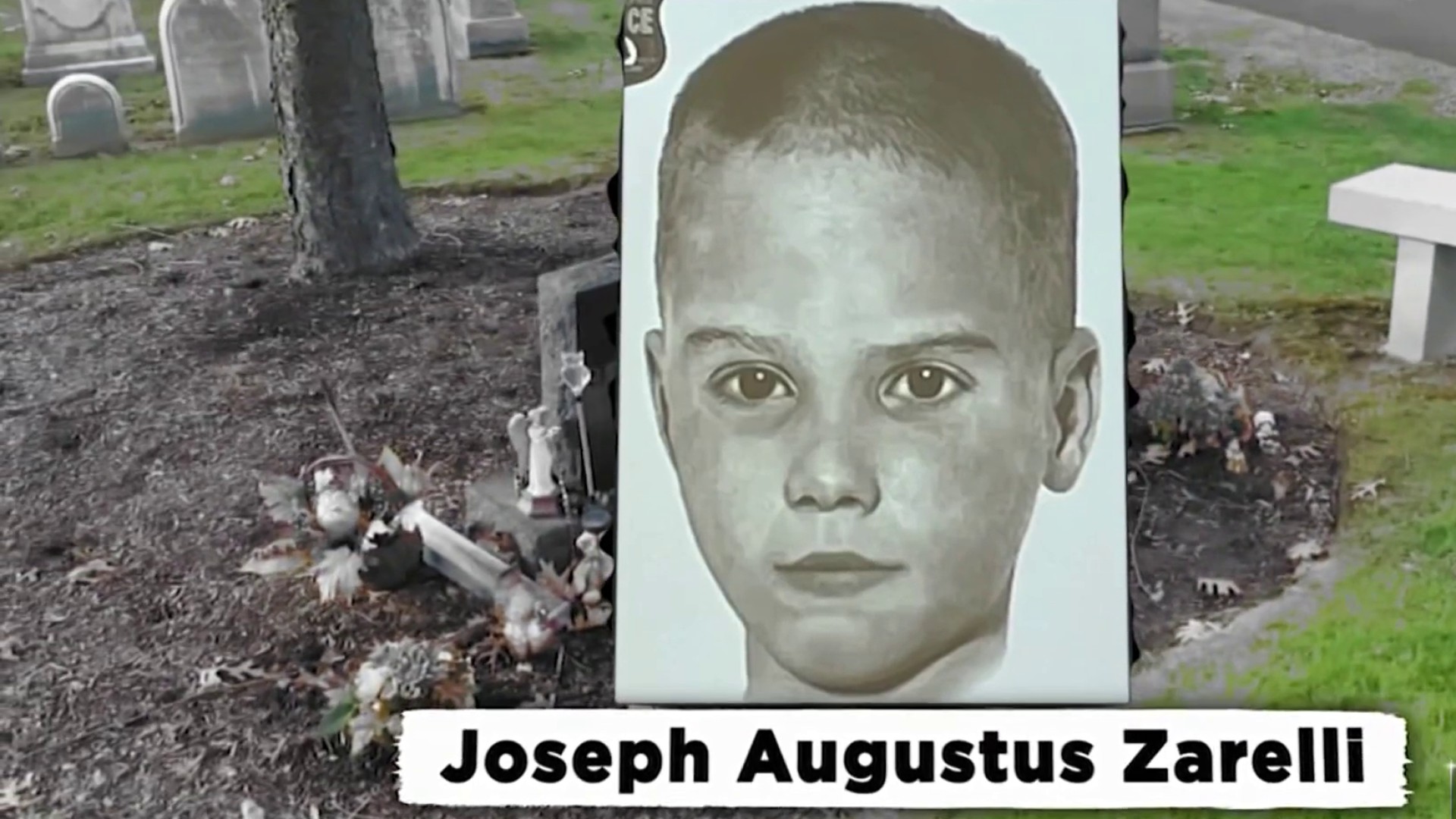What to Know
- A slain child at the center of one of Philadelphia's oldest cold cases now has his name on a grave marker.
- Mourners who gathered at the gravesite Friday marked what would have been the 70th birthday of Joseph Augustus Zarelli -- the 4-year-old found dead in 1957 and long known as the “Boy in the Box.”
- A month ago, police learned his identity through DNA, detective work and genealogical records. Now they hope to learn how he died, even if it's too late to make an arrest.
Patty Braxton grimaced as a priest led a few dozen mourners in prayer on a gray, drizzly Friday beside the grave of a small boy found dead in 1957 and long dubbed “America's Unknown Child” or the “Boy in the Box.”
Her father, retired Philadelphia Detective Thomas Joseph Augustine, worked the high-profile cold case most of his career. The family lived down the street from the potter's field where the boy was first buried, and placed flowers there on holidays.
But Augustine died in October, just six weeks before advances in DNA and online genealogy records would yield the child's name. So Braxton, her sister and their families stood in his place Friday at Ivy Hill Cemetery as investigators who spent decades on the case unveiled a new gravestone bearing the boy's name — Joseph Augustus Zarelli — on what would have been the battered child's 70th birthday.
Get Philly local news, weather forecasts, sports and entertainment stories to your inbox. Sign up for NBC Philadelphia newsletters.
“In his heart, he knew he would never live to see the boy identified, and he didn't, which is just crushing. But we're so thankful to everybody who had a hand in bringing this to fruition, bringing it to an end,” said Braxton, 53, of San Jose, California.
With the mystery of the boy's identity solved, police now hope to learn how he died, even if it's too late to make an arrest. Both of the boy's parents are dead, although he has living siblings, police said in announcing the slender 4-year-old's identity last month.
The breakthrough joins a string of cold cases being reexamined and sometimes solved around the country in recent years, including the Golden State Killer, through the emerging field of genetic genealogy.
It's a confluence of great detective work, cutting-edge science and the careful art of genealogical research, retired city detective William Fleisher said in his graveside remarks Friday.
The revelations, and the truths they tell, can be hard to hear, especially for those learning of long-buried family secrets. The boy's paternal relatives on the Zarelli side have mostly declined to speak to the press as they grapple with news of their link to one of the city's most troubling homicides. Police have not yet identified the child's mother or said who was raising him.
But the clues they disclosed at the press conference last month have thousands of online sleuths in a frenzy trying to unravel Joseph's life and lineage.
His naked, badly bruised body was found on Feb. 25, 1957, in a wooded area of Philadelphia’s Fox Chase neighborhood. He had been wrapped in a blanket and placed inside a large JCPenney bassinet box. Police say he was malnourished and had been beaten to death.
Fleisher believes the rest of his story, and our shared history as a society, should be revealed, no matter the pain involved.
“We’re humans, and humans have evolved, in this country and other places, on bumpy roads. It hasn’t always been pretty, but we continue to evolve and hopefully become more civilized,” said Fleisher, who has poured years into the case since his 1996 retirement as a member of the Vidocq Society, a group of retired investigators devoted to cold cases.
“You have to know history and understand history to do better now,” said Fleisher, who recited a Jewish prayer for the boy during the short service as his own small grandsons squirmed nearby.
Joseph's photo had been put on posters in the late 1950s, and inserted into utility bills, as police worked to identify him and catch his killer. But the answers eluded them.
“It is a big part of our city’s history, a big part of the Philadelphia Police Department's history. It was the country's history,” he said. “Everybody knew about this case. So this is everybody's victory.”
Police now believe the boy lived in West Philadelphia, miles across town from where his body was found.
“My mother and my uncle grew up with his grandparents (in West Philadelphia), a few blocks from the Zarellis. When I was a cop, I patrolled that neighborhood," Fleisher said. “The coincidences are unbelievable.”
Augustine's daughters likewise marvel at the similarities between the boy's name and their father's. Perhaps they got together in heaven and decided “to finish this out together," they said.
“This has been our whole lives, with this boy, our whole entire lives, since we were children," said Kim Augustine, 56, Braxton's sister.
“We played softball next to the potter's field where he was buried and we would visit him on the holidays, with flowers and prayers," she said. “He's never been forgotten."




